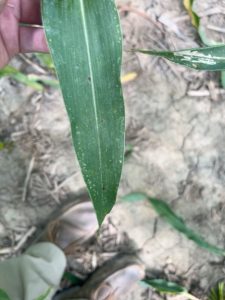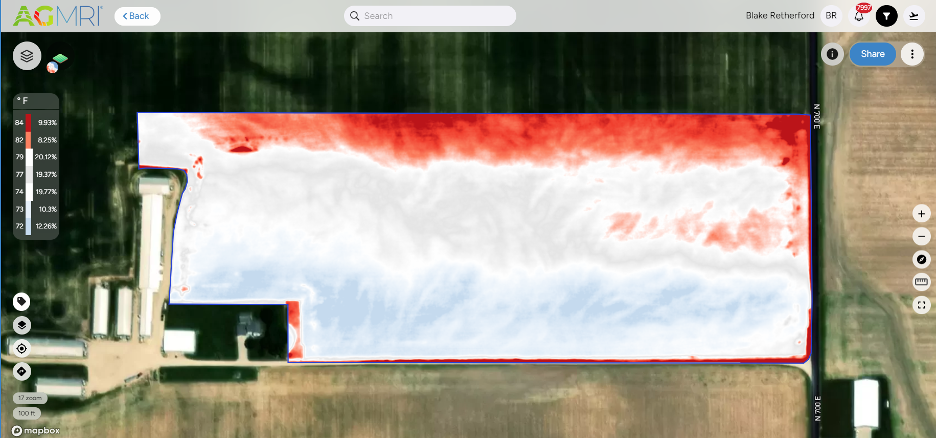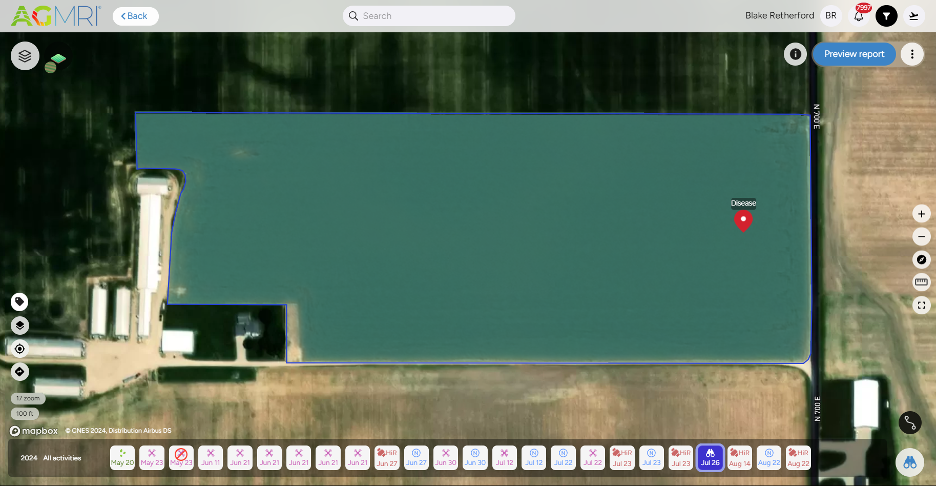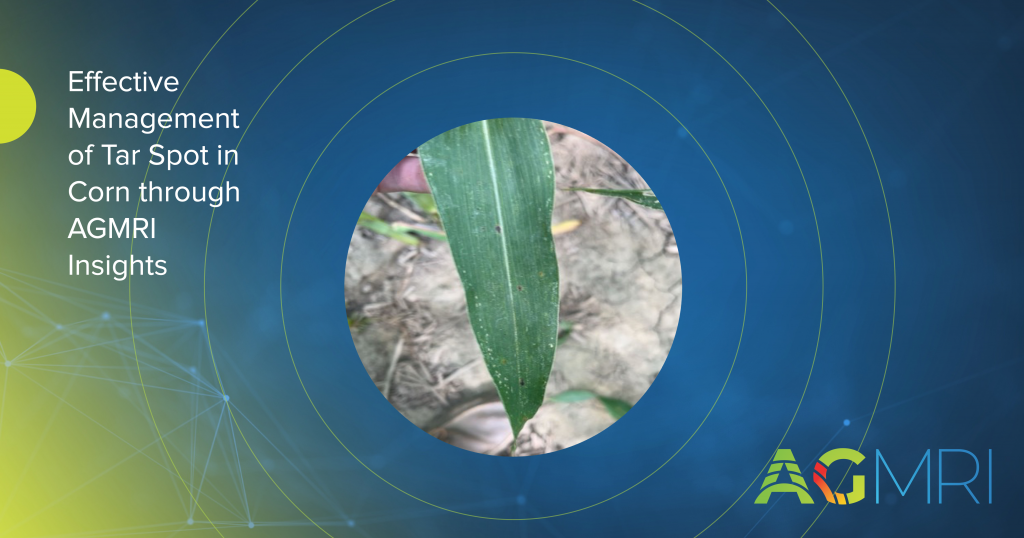
Background
An Indiana grower manages a significant amount of corn planted on corn-on-corn ground. In 2023, he faced a severe outbreak of tar spot, a fungal disease known to reduce yield and quality in corn crops. Aware of the persistent nature of this disease, the grower anticipated a renewed threat this growing season, especially considering he chose to plant corn again.
As the season progressed, he closely monitored his fields for any signs of disease. The weather posed additional challenges, with increased humidity and temperature fluctuations during critical growth stages, further heightening the risk of tar spot re-emerging. The grower’s experience from the previous year made him particularly vigilant; he was acutely aware of how untimely fungicide applications could result in significant yield losses.
Challenge
Despite his proactive approach, the grower faced uncertainty regarding the onset of tar spot pressure in his fields. While he knew the disease would likely return, he needed precise information on when and where to intervene with fungicide applications. This ambiguity raised concerns about potential yield losses if the disease went unchecked, particularly in the critical weeks leading up to tasseling.
To inform his decision-making, the grower utilized a thermal layer map from AGMRI, specifically from a flight on July 22nd. The map revealed unusual striping patterns across the field due to temperature variations. Notably, a wispy red pattern in the middle of the field indicated a concentrated area of thermal stress, correlating with the spread of tar spot.
The grower was on the fence about when to apply fungicide to ensure maximum efficacy. The challenge was to translate the thermal data into actionable insights that would enable him to combat the disease effectively.
Solution
AGMRI provided crucial assistance by allowing the grower to visualize the thermal map, highlighting the areas with heightened disease pressure. Once the tar spot was identified, he decided to apply fungicide to the affected sections of the field. He knew that prompt action would enhance his chances of mitigating yield loss.
With the support of AGMRI’s data, the grower confidently scheduled the fungicide application. Although he was still awaiting specific details on the product used, the timeliness of the intervention was paramount.


Results
The application of fungicide, driven by insights from AGMRI, allowed the grower to prioritize his actions based on real-time data. He noted a significant improvement in disease management and is optimistic about the potential return on investment (ROI) from the timely application.
Reflecting on the experience, he added, “AGMRI’s insights have been invaluable in helping us prioritize our fungicide applications. We’re much better equipped to detect diseases early and act before they escalate. Moving forward, I plan to leverage AGMRI data to enhance our decision-making processes and improve overall productivity.”
The grower plans include a more strategic approach to field management, utilizing AGMRI’s insights for ongoing disease monitoring and resource allocation, ensuring efficiency during busy times of the growing season.













